Potential buyers for both multifamily and detached residences will want more contemporary kitchens and baths with cleaner lines, the National Kitchen and Bath Association (NKBA) reports.
The NKBA recently released its 2015 Kitchen & Bath Style Report, which documents what the industry's leading kitchen designers forecast will be the top features, amenities, and design styles this year. More than 400 NKBA members were surveyed for this report at the end of 2014.
Transitional styles—classic updated with a contemporary twist—takes the top spot for kitchen projects. On the decline for 2015 are Tuscan, Provincial, and Country styles.
"More clients are open to contemporary styles; (they're) not as hard to sell," Phill Johnson of Kornerstone Kitchens near Orlando, Fla., told NKBA.
The association also noticed a shift to the kitchen as the hub for family gatherings and churning out the creative juices. "We have experienced an increase in popularity for incorporating furniture-styled dry bars into kitchen designs," one respondent of the survey, Tori Johnson of Geneva (Ill.) Cabinet Gallery, said.
Here are the top 10 kitchen and bath design trends for 2015:
Kitchen
1. An accessible kitchen
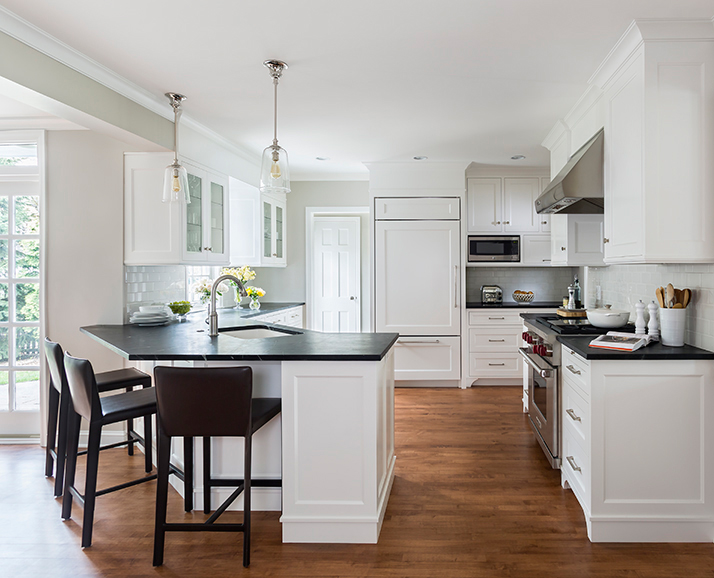 Photo: Andrea Rugg
Photo: Andrea Rugg
Research has found more Americans want to age in place, and accessibility is a key design factor for the kitchen. But the NKBA research found more perks to using universal design, with respondents saying it provides easier access for all, including improved storage solutions.
2. Pet Friendly Kitchens
 Photo: Houzz
Photo: Houzz
Instead of finding ways to block the kitchen from pets, more homeowners are trying to find ways so that their kitchen can better accomodate pets. "We installed a built-in self-filling water trough for the family dogs," one survey respondent said.
3. Whites and off-whites
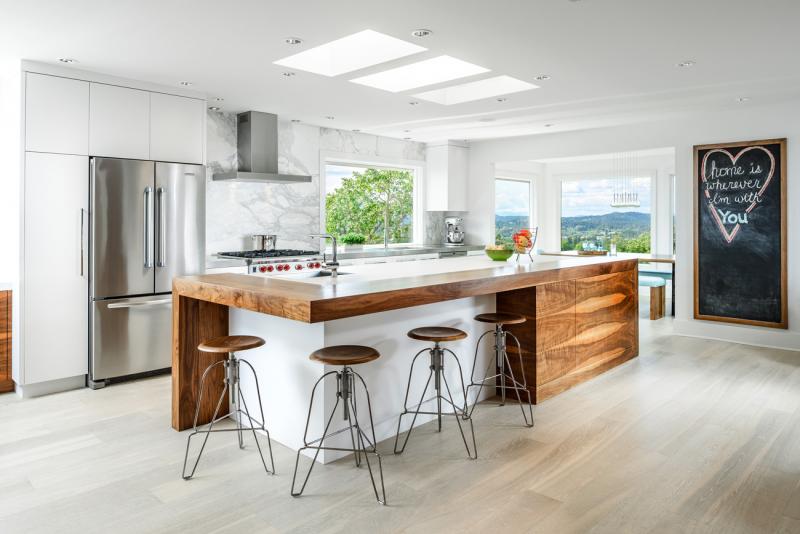 Photo: Joshua Lawrence
Photo: Joshua Lawrence
According to the NKBA, 81% of the association's designers said clients want a brighter kitchen, and a combination of whites and off-whites seems to do the trick. A close second are shades of gray, at 77%. "Gray is the new neutral," one respondent said.
4. Pullouts and rollouts for cabinets
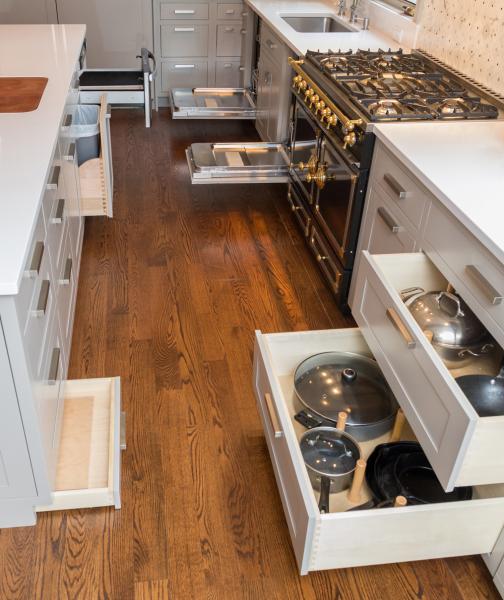 Photo: Joy Yagid
Photo: Joy Yagid
More than 90% of respondents said pullouts are in high demand when it comes to storage. Pullouts for trash and recycling rank at number one, at 92%, followed by lazy susans (85%) and spice pullouts (62%). This allows homeowners to have less clutter on their countertops, allowing that streamlined look.
5. The cooking hobbyist's kitchen
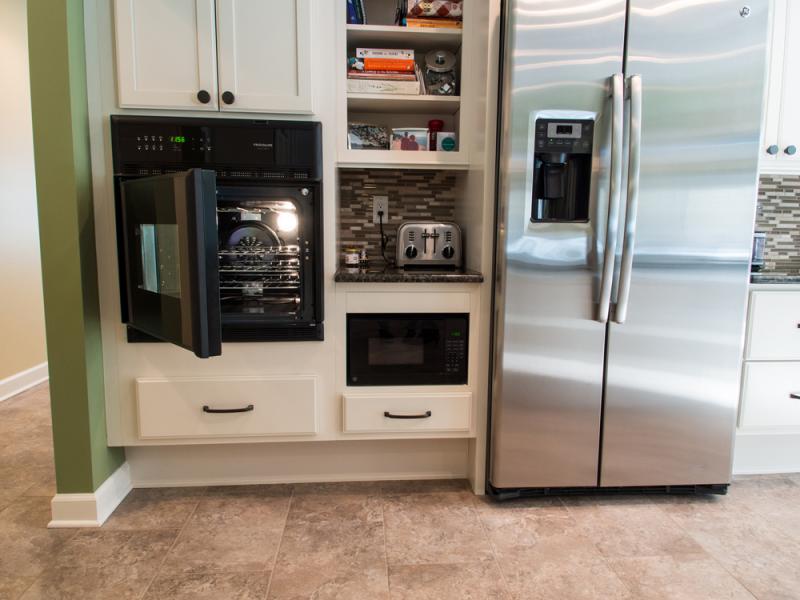 Photo: Roland Hardy
Photo: Roland Hardy
Built-ins and undercounter appliances are taking over demand for freestanding ones. With platforms like Pinterest promoting a wellness-centered, cook-at-home lifestyle, the NKBA noticed demand for multiple appliances to accomodate multiple cooks and clean-up crews. The steam oven has increased demand, and so has the double wall oven.
Bath
6. Polished chrome fixtures
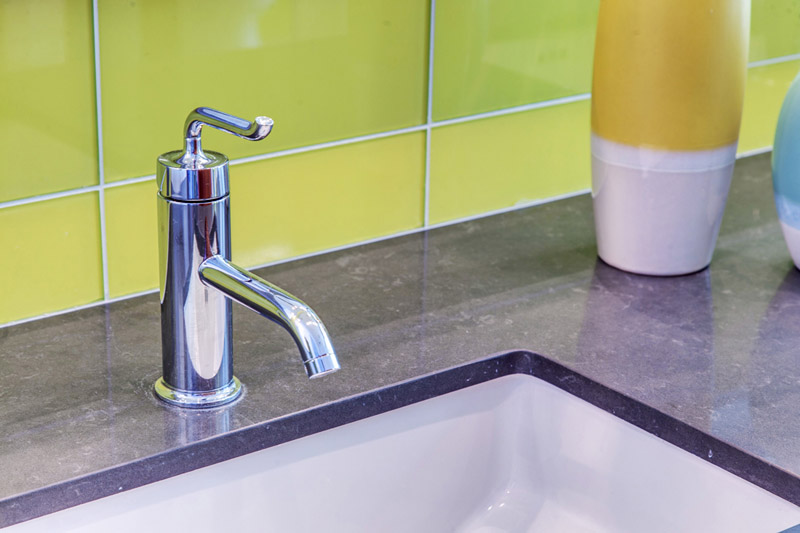 Photo: Laura Moss Photography
Photo: Laura Moss Photography
Research found that polished chrome is the fastest growing choice for bathroom faucet finishes, with 80% of responding designers saying homeowners specified this. On the decline are bronze and oil-rubbed bronze fixtures.
7. Wooden vanities
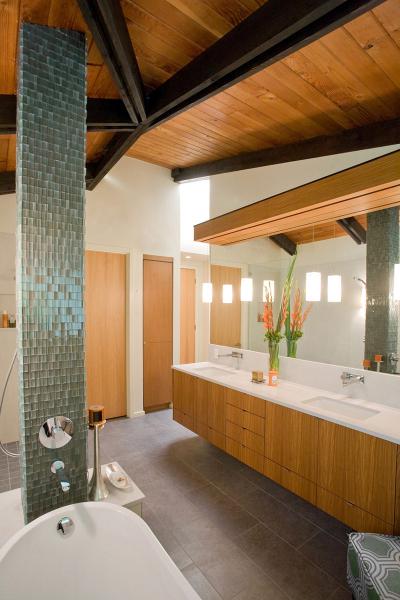 Photo: Arnal Photography
Photo: Arnal Photography
Floating vanities are all the craze right now, especially if they are made out of wood. "We're getting more requests for floating vanities and furniture-looking pieces," one respondent said. Also on the rise are open-shelving style vanities.
8. Pebble floor tiles
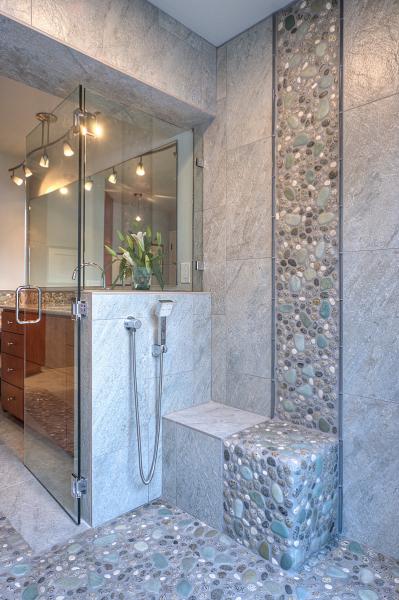 Photo: Mike Small
Photo: Mike Small
So long vinyl and linoleum. More homeowners are going for elegant-yet-still-affordable ceramic tile. Natural stone tile, which includes the "pebble tile" pictured here, are on the rise, and respondents say homeowners are asking for them to be used for both floor and shower wall.
9. Accesible, no-threshold showers
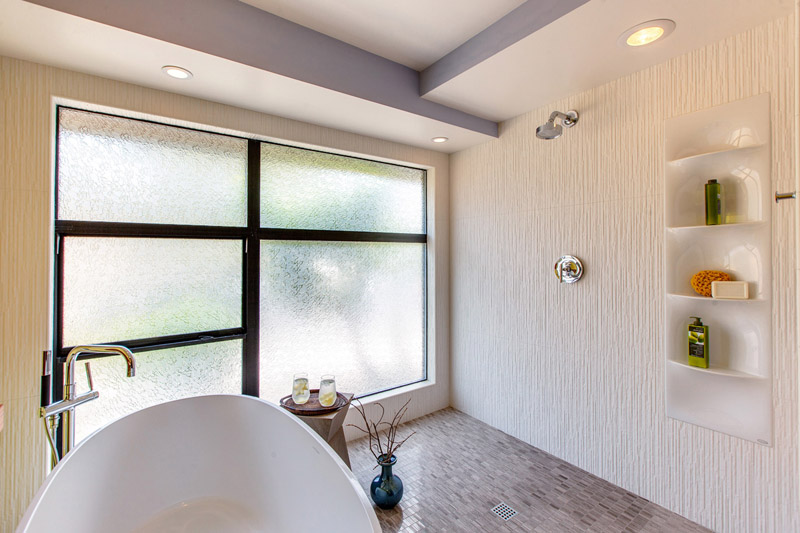 Photo: PreviewFirst.com
Photo: PreviewFirst.com
More than 60% of respondents designed no-threshold showers for their clients in 2014, the survey found. This is up eight percentage points from 2013 and is expected to increase dramatically in 2015.
10. Undermount sinks
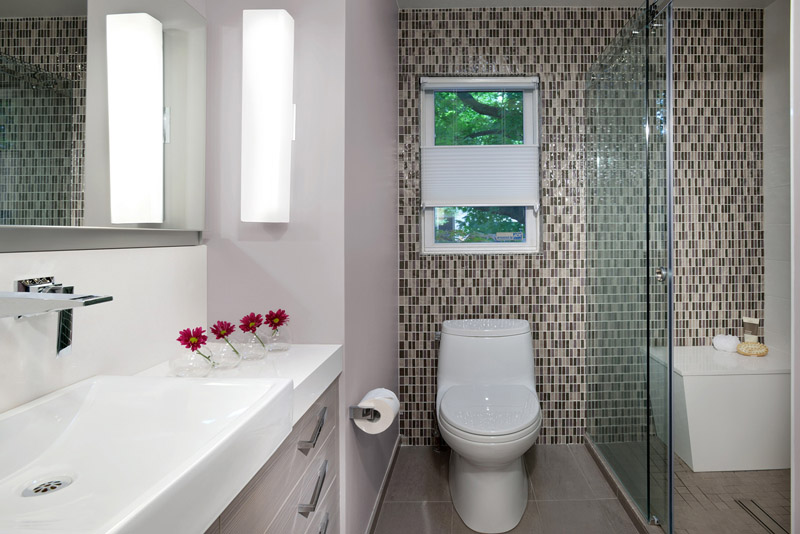 Photo: Arnal Photography
Photo: Arnal Photography
The study found that undermount sinks are predicted to grow strongly in 2015, having already been the number-one style used by 90% of designers in 2014.
Related Stories
| Mar 22, 2011
Mayor Bloomberg unveils plans for New York City’s largest new affordable housing complex since the ’70s
Plans for Hunter’s Point South, the largest new affordable housing complex to be built in New York City since the 1970s, include new residences for 5,000 families, with more than 900 in this first phase. A development team consisting of Phipps Houses, Related Companies, and Monadnock Construction has been selected to build the residential portion of the first phase of the Queens waterfront complex, which includes two mixed-use buildings comprising more than 900 housing units and roughly 20,000 square feet of new retail space.
| Mar 17, 2011
Perkins Eastman launches The Green House prototype design package
Design and architecture firm Perkins Eastman is pleased to join The Green House project and NCB Capital Impact in announcing the launch of The Green House Prototype Design Package. The Prototype will help providers develop small home senior living communities with greater efficiency and cost savings—all to the standards of care developed by The Green House project.
| Mar 11, 2011
Renovation energizes retirement community in Massachusetts
The 12-year-old Edgewood Retirement Community in Andover, Mass., underwent a major 40,000-sf expansion and renovation that added 60 patient care beds in the long-term care unit, a new 17,000-sf, 40-bed cognitive impairment unit, and an 80-seat informal dining bistro.
| Mar 11, 2011
Mixed-income retirement community in Maryland based on holistic care
The Green House Residences at Stadium Place in Waverly, Md., is a five-story, 40,600-sf, mixed-income retirement community based on a holistic continuum of care concept developed by Dr. Bill Thomas. Each of the four residential floors houses a self-contained home for 12 residents that includes 12 bedrooms/baths organized around a common living/social area called the “hearth,” which includes a kitchen, living room with fireplace, and dining area.
| Mar 11, 2011
Texas A&M mixed-use community will focus on green living
HOK, Realty Appreciation, and Texas A&M University are working on the Urban Living Laboratory, a 1.2-million-sf mixed-use project owned by the university. The five-phase, live-work-play project will include offices, retail, multifamily apartments, and two hotels.
| Mar 1, 2011
How to make rentals more attractive as the American dream evolves, adapts
Roger K. Lewis, architect and professor emeritus of architecture at the University of Maryland, writes in the Washington Post about the rising market demand for rental housing and how Building Teams can make these properties a desirable choice for consumer, not just an economically prudent and necessary one.
| Feb 15, 2011
New Orleans' rebuilt public housing architecture gets mixed reviews
The architecture of New Orleans’ new public housing is awash with optimism about how urban-design will improve residents' lives—but the changes are based on the idealism of an earlier era that’s being erased and revised.
| Feb 11, 2011
Chicago high-rise mixes condos with classrooms for Art Institute students
The Legacy at Millennium Park is a 72-story, mixed-use complex that rises high above Chicago’s Michigan Avenue. The glass tower, designed by Solomon Cordwell Buenz, is mostly residential, but also includes 41,000 sf of classroom space for the School of the Art Institute of Chicago and another 7,400 sf of retail space. The building’s 355 one-, two-, three-, and four-bedroom condominiums range from 875 sf to 9,300 sf, and there are seven levels of parking. Sky patios on the 15th, 42nd, and 60th floors give owners outdoor access and views of Lake Michigan.
| Feb 11, 2011
Sustainable community center to serve Angelinos in need
Harbor Interfaith Services, a nonprofit serving the homeless and working poor in the Harbor Area and South Bay communities of Los Angeles, engaged Withee Malcolm Architects to design a new 15,000-sf family resource center. The architects, who are working pro bono for the initial phase, created a family-centered design that consolidates all programs into a single building. The new three-story space will house a resource center, food pantry, nursery and pre-school, and administrative offices, plus indoor and outdoor play spaces and underground parking. The building’s scale and setbacks will help it blend with its residential neighbors, while its low-flow fixtures, low-VOC and recycled materials, and energy-efficient mechanical equipment and appliances will help it earn LEED certification.
| Feb 11, 2011
Apartment complex caters to University of Minnesota students
Twin Cities firm Elness Swenson Graham Architects designed the new Stadium Village Flats, in the University of Minnesota’s East Bank Campus, with students in mind. The $30 million, six-story residential/retail complex will include 120 furnished apartments with fitness rooms and lounges on each floor. More than 5,000 sf of first-floor retail space and two levels of below-ground parking will complete the complex. Opus AE Group Inc., based in Minneapolis, will provide structural engineering services.















